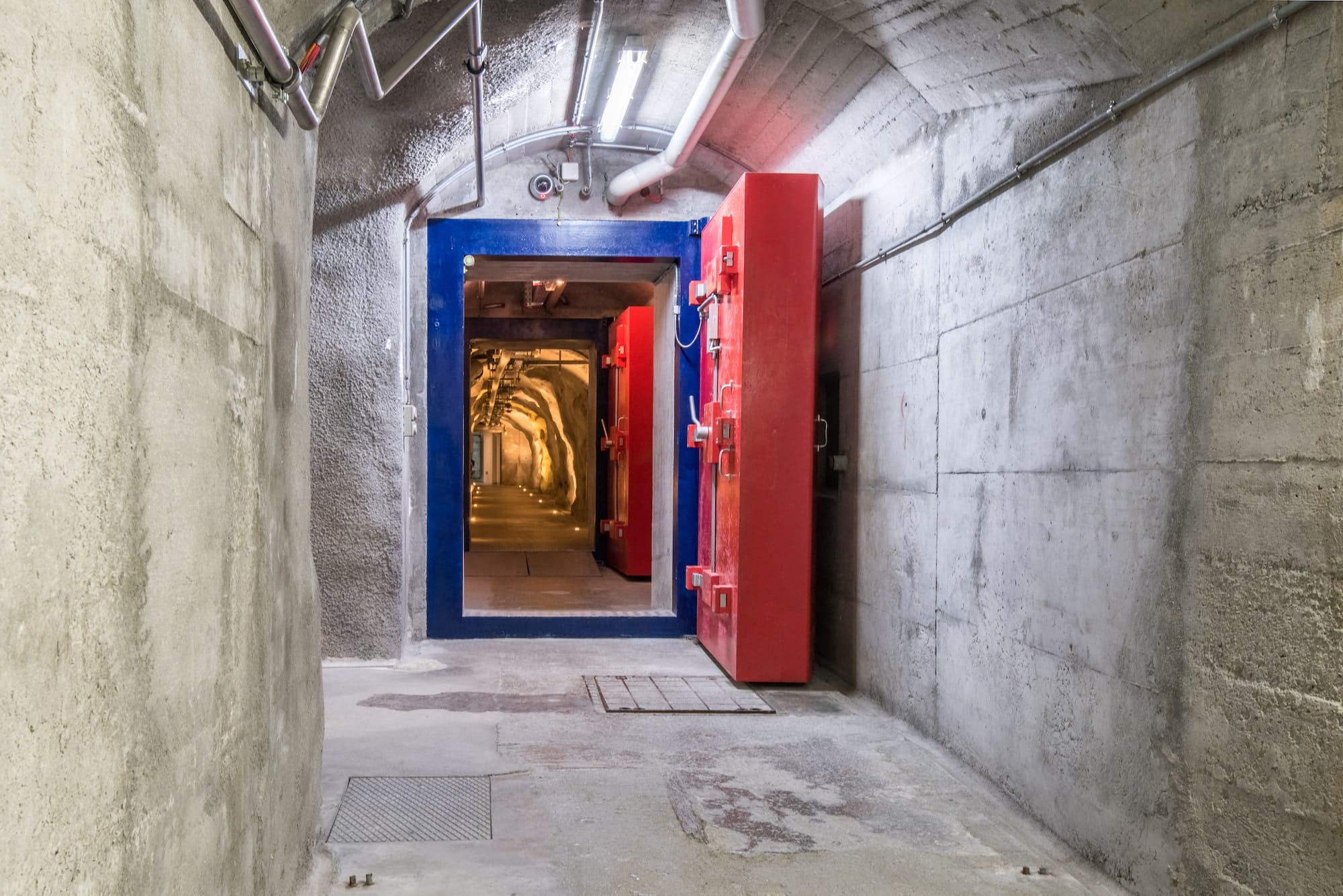
When you store your files, photos, documents or films in SecureSafe, they are sent to our Swiss data centers in encrypted form and are secured in multiple ways. One of these data centers is located in a former military bunker in the Swiss mountains.
To ensure the greatest possible security against data loss, our customers' data is backed up three times, i.e. each file is stored in different locations at the same time. This procedure for high-security hosting is known as redundancy. The first two copies of each file are used in the main data centers. Which file is accessed depends on which servers in the data centers are currently receiving more requests (traffic). The third copy of the file is stored as a backup at a "disaster recovery location". This data center is located deep in the Swiss Alps and provides maximum protection for the data in the event of a disaster, should the other data centers be destroyed, e.g. in the event of floods, fires, accidents such as an explosion of a tanker next to the data center, terrorist attacks or acts of war.
The disaster recovery data center is perfectly camouflaged, hidden behind thick rock walls. Even those standing in front of it will have no idea what is behind the small, inconspicuous entrance door. Once you have found the entrance, there are tons of security doors, small corridors and revolving doors until you finally reach the server rooms. Access is strictly regulated and is always accompanied by security personnel. The entire complex is under round-the-clock video surveillance, has other sophisticated security mechanisms and is set up for possible self-sufficiency. The data is therefore locked away.
In addition to the best possible shielding from external influences, we also protect the data several times over through encryption. The data centers are connected via several underground, encrypted network connections. And each file itself is also additionally encrypted at SecureSafe. This "onion principle" means that the data remains protected at all times and only the SecureSafe user himself can decrypt it by entering the login data. This also means that in the unrealistic event of the server being stolen, the data is unusable because it cannot be decrypted. Incidentally, the same applies to all employees of our company: the zero-knowledge architecture makes it technically impossible for us to decrypt the data and view it.